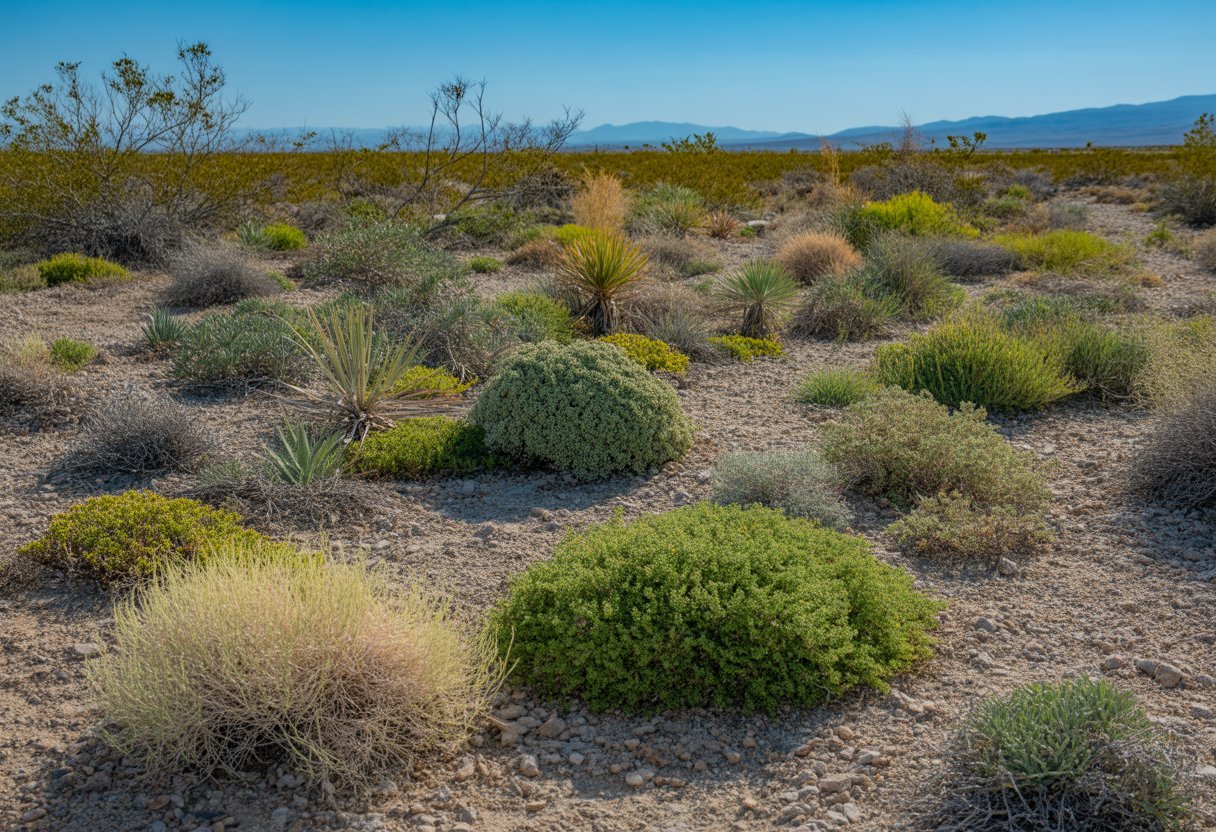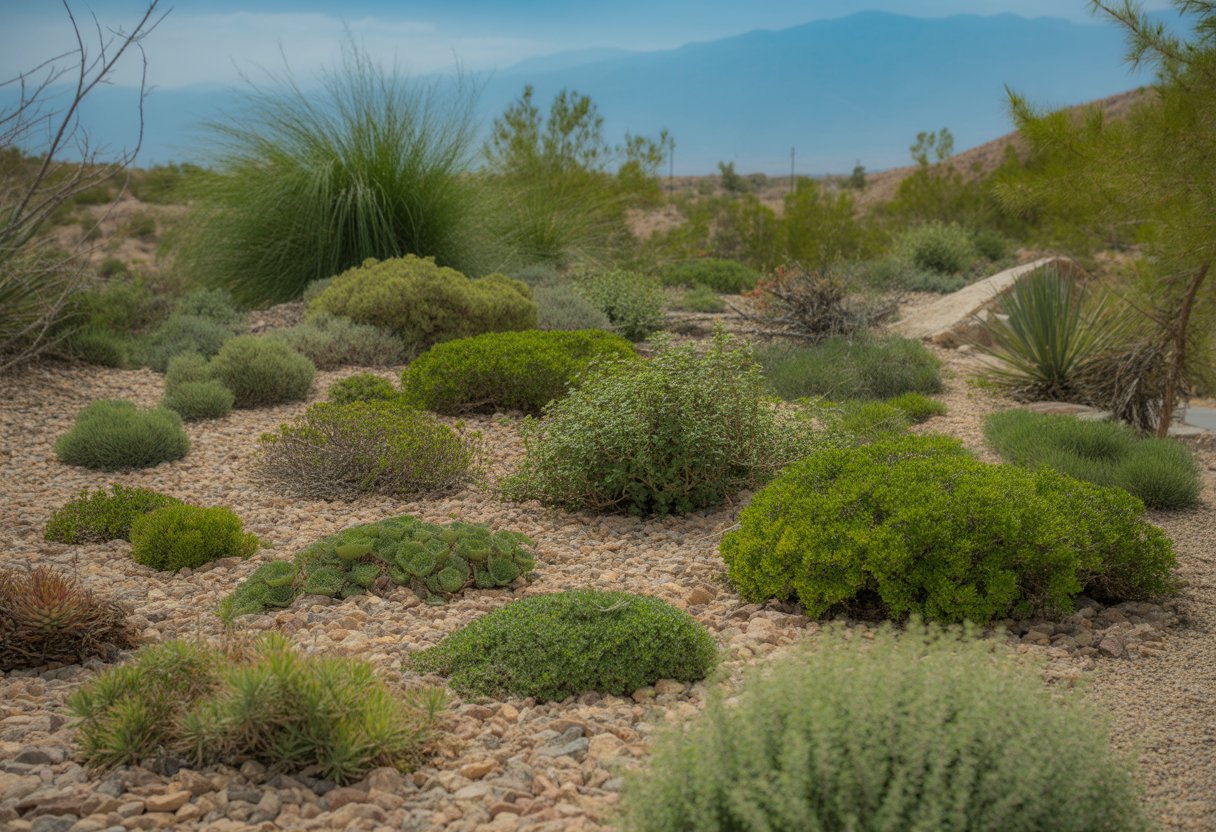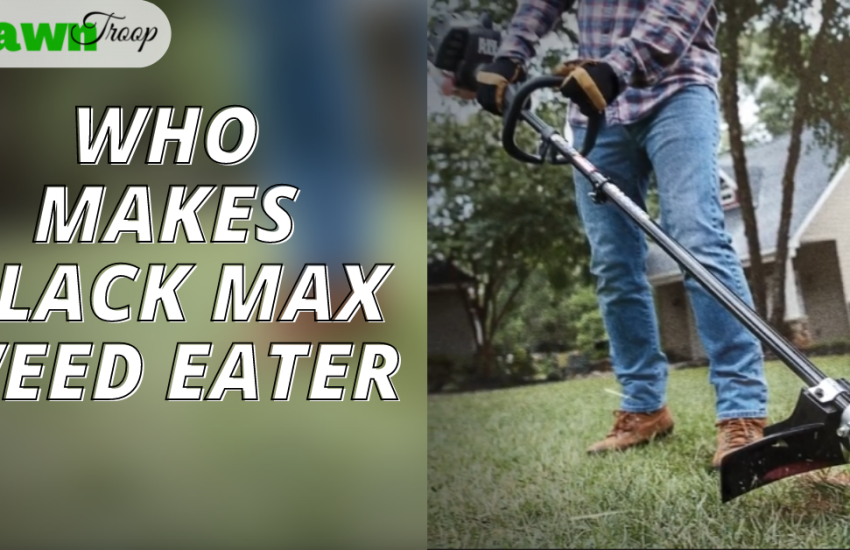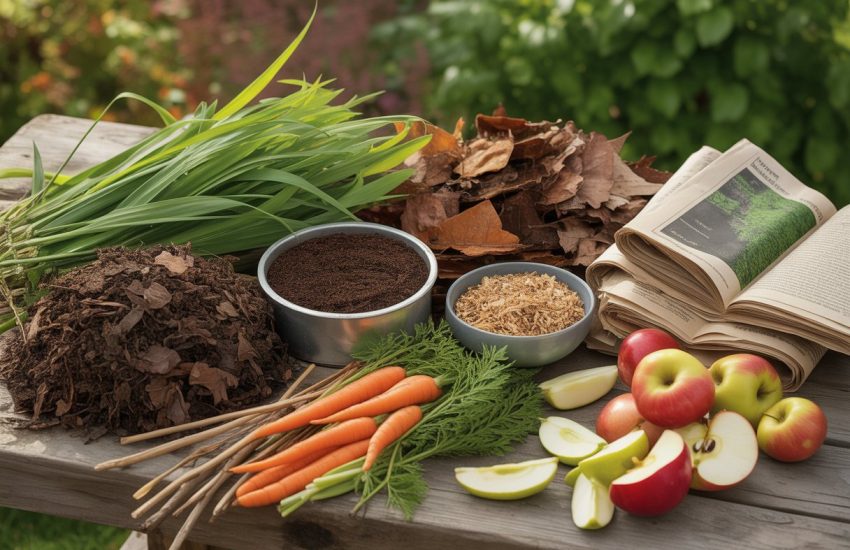Best Ground Cover Plants for Nevada to Enhance Drought-Tolerant Landscaping
Nevada’s climate throws some real curveballs at gardeners who want to keep their spaces green and healthy. Harsh sun, not much rain, and rough soil mean you’ve gotta pick ground cover that’s tough and doesn’t mind a little neglect.

Some of the best ground cover plants for Nevada are creeping thyme, blue grama grass, and desert senna. They don’t just handle dry conditions—they actually thrive, giving you solid soil protection and a nice look for your yard.
These plants help cut down on erosion and don’t guzzle water, so they’re practical for just about any landscape in the state.
If you pick the right ground cover, you save time, money, and a lot of headaches. Knowing which plants actually work here lets you make choices that’ll pay off for years.
Understanding Nevada’s Climate and Soil

Nevada’s environment isn’t exactly forgiving. You get all kinds of soils, crazy heat, and way less rain than you’d like.
If you want your ground cover to stick around, you need to pick the right plants and get the soil ready first.
Soil Types Across Nevada
Nevada’s got everything: sandy, clay, loam, and a lot of alkaline soil. Sandy soil drains fast but doesn’t hang onto nutrients, so you need to add stuff like compost to help it out.
Clay soil holds onto water, but sometimes roots can’t push through when it gets packed down. Loam is kind of the goldilocks soil—good balance, but you don’t see it everywhere in Nevada.
Alkaline soil is all over the place, with high pH that can mess with nutrient uptake. If you’re not sure, test your soil’s pH and pick plants that don’t mind alkaline conditions.
Sometimes you can add sulfur or organic material to help, but it’s not always a quick fix.
Knowing what kind of soil you’re working with makes it a lot easier to pick ground covers that’ll actually grow.
Impact of Heat and Drought
Nevada summers get hot—like, really hot. Rain is rare, with some places seeing less than 10 inches a year.
Most days, temps shoot past 90°F, which stresses out plants that aren’t built for it. That’s why drought-tolerant ground covers are the way to go.
A lot of native plants have deep roots, so they can grab water that others can’t reach. If you do water, make it count—don’t waste it.
Plants with waxy or fuzzy leaves lose less water, which helps. The heat can dry out soil fast and even slow down the good microbes that plants need.
Soil Preparation for Ground Cover
Before you start planting, test your soil for texture, pH, and nutrients. Add compost or well-rotted manure to boost water retention and nutrients, especially if your soil’s sandy or alkaline.
Break up packed soil so roots can get through and water can soak in. If you’ve got clay, try raised beds or mounds for better drainage.
After planting, throw down some mulch. It keeps moisture in, keeps the soil cool, and cuts down on weeds.
Getting the soil right from the start makes your life easier and your plants happier.
Top Ground Cover Plants for Nevada Gardens

If you’re gardening in Nevada, you need plants that save water and don’t fry in the sun. Pick ground covers, perennials, and shrubs that can take the heat and give you year-round coverage.
Drought-Tolerant Perennials
Perennials like Lavandula (lavender) do great with barely any water. Plus, pollinators love them, and they smell amazing.
Sedum species work too—their thick leaves hold onto moisture. Penstemon adds pops of color and doesn’t mind dry soil.
These perennials fill in fast, help stop erosion, and don’t need much fussing over.
They’re flexible and tough, which is exactly what you want in Nevada’s climate.
Best Shrubs for Ground Coverage
Shrubs like Arctostaphylos uva-ursi (kinnikinnick) grow low and thick, blocking weeds and helping the soil stay damp. Once they’re settled in, you barely have to water them.
Ceanothus (California lilac) shrubs spread out quickly and show off with blue flowers. They even boost soil fertility by fixing nitrogen.
These hardy shrubs create a solid, green carpet—just what you need for Nevada’s rough soil and weather.
Low-Growing Flowering Plants
Low-growing flowers brighten up your yard and soften the edges. Eriogonum (buckwheat) puts out bunches of little flowers, shrugs off drought, and draws in good bugs.
Thymus (creeping thyme) spreads out between stepping stones, smells great, and handles the heat without breaking a sweat.
They look good, cover bare spots, and don’t need much water once they’re going.
Managing and Maintaining Ground Covers

Keeping ground covers looking good in Nevada takes a bit of strategy. You need to stay on top of weeds, use mulch right, and pick plant combos that help your garden thrive.
It’s the details that make your ground cover last through the heat and dryness.
Weed Growth Suppression
Weeds don’t waste any time taking over if you give them a chance. Check your ground covers regularly, especially when things are growing fast.
Pull weeds by hand or use a hoe—just don’t go too deep and mess up your ground covers. If you use pre-emergent herbicides, pick ones that won’t hurt your main plants.
Packing your ground covers in tight leaves less room for weeds to sneak in.
Water deeply but not often, so your ground covers grow strong roots and outcompete the weeds. Stick with it, and you’ll keep weeds from messing with your plant health.
Using Mulch Effectively
Mulch is a lifesaver for ground covers—it keeps the soil moist and cool. Organic mulches like bark chips or shredded leaves make the soil better over time as they break down.
Aim for a 2-3 inch layer, but don’t pile it right up against the stems or crowns, or you’ll get rot or pests. Mulch also blocks sunlight, so fewer weed seeds sprout.
Synthetic mulches like landscape fabric can stop weeds, but sometimes they keep out water and air too. If you mix mulch with smart watering and good plant spacing, your ground cover will look better and last longer.
Integrating Ferns and Companion Plants
Ferns can really thrive as ground covers in shady or moist garden spots around Nevada. They add a ton of texture and diversity, which is always a win.
If you pick companion plants with similar water and light needs, you’ll cut down on competition and help everything get along. Ornamental grasses or drought-tolerant perennials? Those usually play nice with ferns.
Sometimes, companion planting even keeps pests at bay and brings in more beneficial insects. Not a bad bonus.
Give your ferns and their buddies enough space for good airflow. That step helps lower the risk of disease.
Mixing different ground covers can boost soil health and make your garden look a lot more interesting, all while keeping things practical.


